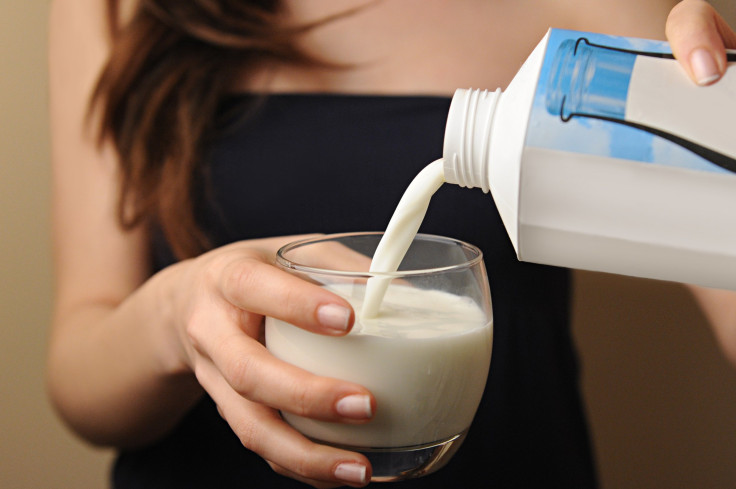A Dairy Aisle Dilemma: Are Almond, Coconut, And Other Milks Actually Any Healthier?

The modern day milkman is carrying a very different basket of ingredients than he once did in our grandparents’ generation. Americans are reaching past the conventional cow’s milk and into their grocery store coolers for popular nondairy milks made from almonds, cashews, coconuts, flax, hazelnuts, hemp, oats, rice, soy, and other derivatives. There’s something hip and stylish about the avant-garde ingredients that make drinking milk cool again, except it’s not milk at all. But are the newer, wide-variety of nut and grain-derived choices truly filling the shoes of our mooing farm friends?
“Nut, coconut, rice, soy, and the others really aren’t ‘milk,’” Dr. Donald Otter, a senior food scientist at AgResearch Grasslands Research Centre, told Medical Daily. “The milk produced by mammals is intended to be the sole food for the animal’s neonates. As such, it provides a complete and balanced food for that species and contains everything that baby needs for growth and development. Do adults need milk? No. Is milk still a good food for adults? Yes. Can the nutrients in milk be derived from other foods/supplements? Most likely, yes.”
Cartons Galore: How To Choose
The first thing you should do when trying to figure out if the milk you’re choosing is right for you is to check the protein on the back, according to the Center for Science in the Public Interest. Soy milk is the only type of nondairy milk that can match up to cow’s milk, with 8 grams of protein in each cup. However, give the sugar a double take. If there’s a lot, you may have to sacrifice a gram or two of protein for a less sugary option. Starting your day with about 20 grams of protein is important for fuel, energy, and metabolism efficiency.
Next, make sure there are enough nutrients to compare to cow’s milk. A conventional glass of milk is packed with calcium, vitamin B-12, potassium, and vitamin D. Meanwhile, nondairy choices are fortified to mimic cow’s natural amount of nutrients, which means it’s added in afterward. Soy milk also does a good job at hitting cow milk’s potassium levels. Don’t be wowed by the nondairy milks that promise more calcium than dairy milk, because more isn’t necessarily better unless you’re a woman over 50 or a man over 70. In that case, drink up!
Beware of sugary soy, almond, or coconut milk, as they tend to blend in vanilla or chocolate flavoring, which also means they’re pouring in some added sugar as well. Each cup of cow’s milk has 3 teaspoons (12 grams) of naturally occurring milk known as lactose. Always opt for the unsweetened, or if you’re really desperate for some sweetness, choose the original, which will only have a teaspoon or two of added milk.
The organic craze also has a lot of people scratching their heads in front of the glowing milk cases of their supermarkets. Fortunately for them, last month New Zealand researchers studied how organic milk differentiates from conventionally produced milk and then took a look at their price ranges.
“Any differences they might have are most likely due to the differences in feed rather than anything else,” Otter said. “If both a conventional herd and an organic herd were fed the same, we would expect the milk to be very, very similar. Organic and conventional milk have no differences in nutritional values if they are produced under the same conditions, (same diet, same breed, and same fertilizer application). In most countries there are likely to be differences in the production between organic and conventional milk, with regulations for organic milk production according to country-specific guidelines.”
Despite the few differences between the nutrients and taste of organic and conventional milk, there still remains a wide price gap. Consumers may be surprised by the reality of the situation when they find out there isn’t a significant difference between the two different types. Purchasing certain products for how they’re perceived in the public eye instead of how they function in your private life will typically fail the consumer. Unless you have a milk allergy or another reason you’ve been medically advised not to consume dairy, you should opt for the most nutritious choice and not the one that’s in fashion.
“Some few people are allergic to cow’s milk, and lactose intolerance can present a problem to some people,” Otter said. “Those other ‘milks” aren’t going to be able to replace cow’s milk from a nutritional standpoint, but they’ll work just fine in your latte.”
Source: Otter DE, Schwendel BH, Wester TJ, Morel PCH, Tavendale MH, and Deadman C, et al. Invited review: Organic and convetionally produced milk-An evaluation of factors influencing milk composition. Journal of Dairy Science. 2015.



























